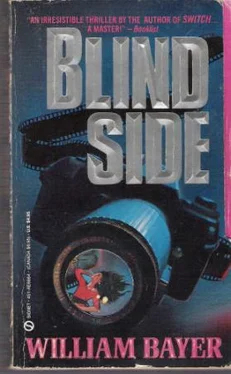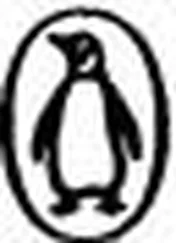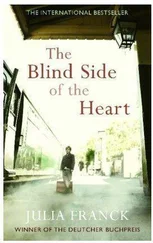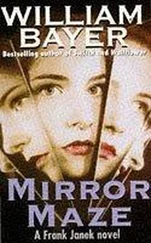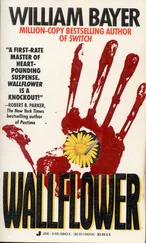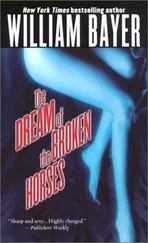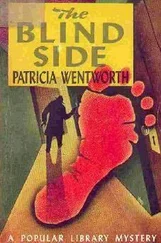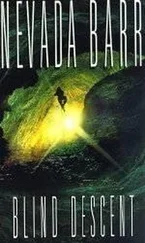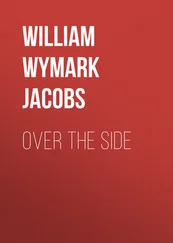William Bayer - Blind Side
Здесь есть возможность читать онлайн «William Bayer - Blind Side» весь текст электронной книги совершенно бесплатно (целиком полную версию без сокращений). В некоторых случаях можно слушать аудио, скачать через торрент в формате fb2 и присутствует краткое содержание. Жанр: Триллер, на английском языке. Описание произведения, (предисловие) а так же отзывы посетителей доступны на портале библиотеки ЛибКат.
- Название:Blind Side
- Автор:
- Жанр:
- Год:неизвестен
- ISBN:нет данных
- Рейтинг книги:4 / 5. Голосов: 1
-
Избранное:Добавить в избранное
- Отзывы:
-
Ваша оценка:
- 80
- 1
- 2
- 3
- 4
- 5
Blind Side: краткое содержание, описание и аннотация
Предлагаем к чтению аннотацию, описание, краткое содержание или предисловие (зависит от того, что написал сам автор книги «Blind Side»). Если вы не нашли необходимую информацию о книге — напишите в комментариях, мы постараемся отыскать её.
Blind Side — читать онлайн бесплатно полную книгу (весь текст) целиком
Ниже представлен текст книги, разбитый по страницам. Система сохранения места последней прочитанной страницы, позволяет с удобством читать онлайн бесплатно книгу «Blind Side», без необходимости каждый раз заново искать на чём Вы остановились. Поставьте закладку, и сможете в любой момент перейти на страницу, на которой закончили чтение.
Интервал:
Закладка:
"I don't believe Kim Yates could pack up everything she owned in just a couple hours."
He glared at me.
"You saying I stole something?"
"I'm saying there was a lot more than empty bottles and Chinese food containers that you 'cleaned up."
"Suit yourself," he said, showing me his best thousandyard stare.
"Now, get lost. I got work to do."
I placed my card on top of the twenty-dollar bill.
"Change your mind, comandante, I'll make it worth your while." He didn't look up, just grunted and turned back to his magazine.
On my way home I stopped at the lab to pick up my blowups. My plan had been to circulate them, leave them at Lil's and the other clubs, at the modeling agencies, acting schools, any place she might have frequented or been known. But when I got home, I started dealing them out on the floor like giant playing cards. Then, staring at this huge rectangle composed of my images of her, I grew dizzy and crawled into bed.
I got up in the middle of the night, thinking I'd go out with my camera and work the streets. But as I stepped gently on my carpet of photographs I was seized by a different idea.
I got out my paper cutter and a pot of paste, and set to work. I mounted one of the portraits in the left upper corner of a big piece of mat board, then began to slice up other blowups of the same shot. Soon I had a serialized image of her, one frame of her full face, then a row of strips of varying thicknesses showing her eyes, lips, ears and cheeks. I used the second photograph for the second row, the third for the third, then started again with the first. By dawn I'd constructed a mural-sized montage, the face of the woman I knew as Kimberly Yates fractured into a thousand pieces and then recomposed. Standing back from it, I saw forms and rivers shaped by the ebb and flow of tones. The piece was a portrait and a construct, both real and abstract. I liked it so much that, first thing in the morning, I went to the lab with twenty more negatives to be blown up. Then I went to an art store, bought a stack of mat boards and a gallon of paste. Then for three days I worked with slivers of my portraits, constructing more mu.rals. Finally I set upon the nudes, cutting them up and serializing them too.
It was exciting work and I was possessed by it, the same way I'd been possessed during those first nonstop days when I'd tried to take her portrait. But, strangely, there were times when I didn't think about her at all, when I forgot whose face and body had provided my raw material. Taking her apart, cutting her up, turning her into something new-as I worked with pieces of her the patterns became ends in themselves. The huge murals composed of fractured and reconstructed images suggested a whole new direction for my photography.
But still there were times when I paused, gazed at my montage-constructs, and tried to puzzle them out. Knowing that these images had been stenciled off her filled me with a fierce yearning. No matter that she had lied,
played false, made me feel the fool, I wanted her desperately, and prayed that she'd come back.
I'm not sure when I first noticed him. I probably saw him several times before it re istered that I'd seen him before. It was only then that I realized that there was indeed a secret hidden in my photographs.
The first place I became consciously aware of him was in the background of a casual shot I'd taken of Kim at the South Street Seaport. I couldn't see him very well; he was slightly out of focus. His face was half concealed by a camera too, and it was that camera that caught my interest. It was a Pentax 6 x 7, a heavy medium-format professional instrument, not the kind of equipment the average person carries around.
The camera registered on me, and then I forgot about it, until, a few minutes later, looking at other frames from the series, I found him in the background again, and then again. I began to feel uneasy. This man with the camera-what was he doing there? For a while I couldn't put my finger on what was wrong. Then I grew excited.
Yes, it actually seemed that this man, who for some reason I'd always caught holding his big Pentax to his eye, had been photographing in our direction at the very moments that I'd been photographing Kim. And that was either an extraordinary coincidence, or it meant that he had been photographing us.
I recalled the afternoon. It had been Kim's idea to go to Seaport. As always when we worked outside, I tried to accommodate her; for me the exterior sessions were not for serious photography but an excuse to get us out of the suffocating tension of the studio. It had started out as an overcast afternoon, but then the late summer light broke through to play exquisitely on the river. There must have been ten thousand people milling around, the regular yuppie contingent from Wall Street and a vast number of summer tourists, including many foreigners. A lot of these out-of-towners had carried cameras. So why had this particular man, with his professional Pentax 6 x 7, decided to fasten upon us? And if I was right, if that was what he had been doing, had his interest been casual, or had we been under his surveillance?
It was several hours before I found the answer, and, when I did, I stared at my evidence, hardly believing it could be true. Three facts were indisputably clear: the man with the big camera appeared in the backgrounds of shots I had taken on several different days; he nearly always appeared facing me with his camera to his eye; he only appeared at places that Kim had suggested that we go. This last fact shook me the most.
Who was this man?
I examined all the shots in which he appeared, searching for one that was clear. There were several in which I could make out his left eye, a couple of good views of his hair and ears, one that nicely caught his chin and nose. But no single shot gave a decent impression of his face.
I decided to use the Identi-Kit method. I made blowups of all the best angles I had of him, then cut up the prints until I had a collection of his features. I then reassembled the clearest of these, creating a composite.
It was a difficult task. That damn Pentax was always blocking out one of his eyes. But then it occurred to me that the camera itself could be a clue to his identity: if he was a professional photographer, a picture of him, camera up, would be characteristic and therefore, I hoped, recognizable.
The portrait I finally created looked a little strange, assembled from pictures with different points of perspective. But strange or not, I had no doubt I had revealed him. A person who knew him should be able to identify him upon looking at my composite. I rephotographed it, then made up some 8 x 10s to show around. When I was finally finished and staring at my handiwork, I was seized by the notion that I had seen the man before.
Had I? I wasn't sure. After all, I'd been staring at bits and pieces of him for an entire day. Familiar with the torments of puzzling over a half-forgotten face, I gave up trying to place him and took a break. But later that evening, glancing at the composite again, I was struck by the fact that I was now on the track of another photographer, a kind of double of myself, who, apparently in collusion with Kim, had engaged in movements parallel to my own.
"All I had to go on was the cryptic name of an escortservice madam ("Mrs. Z"), and the cut-up face of a photographer. I decided to start with the photographer-I thought he might be easier to find.
New York is full of camera stores, big, small, fancy, basic, a few where the salesmen are helpful, a great number where they're hideously rude. There're usedcamera stores where you are likely to be taken, and places, owned by Hasidim, where you get big discounts buying "gray market." But in the entire city there's only one store professionals really like. You pay full price at Aaron Greene Photographic, but you get good service and you don't get hustled.
Читать дальшеИнтервал:
Закладка:
Похожие книги на «Blind Side»
Представляем Вашему вниманию похожие книги на «Blind Side» списком для выбора. Мы отобрали схожую по названию и смыслу литературу в надежде предоставить читателям больше вариантов отыскать новые, интересные, ещё непрочитанные произведения.
Обсуждение, отзывы о книге «Blind Side» и просто собственные мнения читателей. Оставьте ваши комментарии, напишите, что Вы думаете о произведении, его смысле или главных героях. Укажите что конкретно понравилось, а что нет, и почему Вы так считаете.
